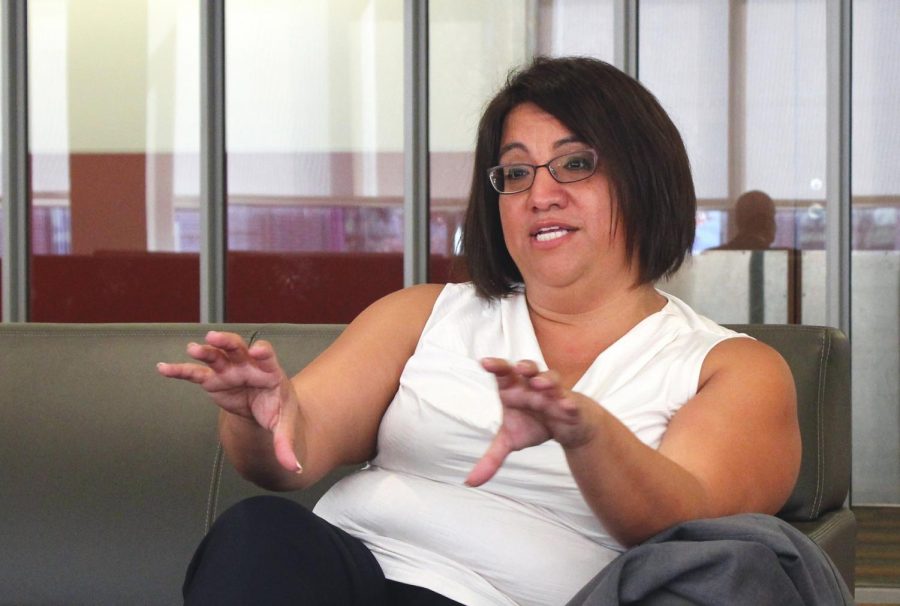University weighs budget cuts
Student Affairs must spend $130,000 less by next fiscal year
LAURA BATE | The Daily Evergreen
Mary Jo Gonzales, VP of Student Affairs, discusses the impact that the recent budget cut will have on WSU students.
October 27, 2017
It’s too early to tell where the Division of Student Affairs will find 2.5 percent of its state-allocated dollars to slash in order to meet WSU President Kirk Schulz’s university-wide mandate to curb spending.
In a memo sent to college deans and his cabinet, Schulz described his plan to soften the impact of depleting reserves. He has said WSU’s budget should be back on track after cutting spending by $10 million for three years in a row, which would demand a 2.5-percent spending cut across the board. Athletics has separate budgeting guidelines, he wrote in the memo.
Mary Jo Gonzales, the division’s leader, invited 87 Student Affairs staff members — whose positions and programs depended on state money — to discuss how budget cuts would affect them Thursday morning.
The division must spend roughly $130,000 less in the next fiscal year, a small fraction of its $160 million total budget, but finding what to cut is still a daunting task, she said.
“There is no fat left to cut,” Gonzales said. “We’re going to have to pick some things [to cut] that are important out of a list of very important things.”
The meeting was intended to educate Student Affairs staff on how Schulz’s spending reduction plan would relate to the division’s budget, she said.
Despite students’ demands to keep the Office of Multicultural Student Services retention counselors, Gonzales’ division will eliminate some of their positions in order to meet another Schulz mandate of chopping down the number of employees whose positions lack permanent sources of funding.
Student activists packed an ASWSU Senate meeting earlier this month to protest the cuts. The announcement also drew criticism from senators over the administration’s decision to hire a new Associate Vice President for Community, Equity and Inclusive Excellence and not keep the retention counselors.
MSS is the most expensive of Student Affairs’ 22 departments, spending about a sixth of the division’s $5.1 million in state funds.
Gonzales said one position in MSS and one in the Office of Equity and Diversity have permanent funding, but temporarily contracted employees occupy them. The university will allow those employees’ contracts to expire in June, after which it will form a search committee to consider applicants. Gonzales said the current temporary employees in those positions could apply and might be re-hired.
The budget cuts should not directly affect Student Affairs’ approximately 2,500 student employees, Gonzales said.
“Student employment is one of the most important resources we provide,” she said. “I do not believe [hiring fewer students] will be one of our strategies.”
Gonzales said Student Affairs’ executive team would meet Friday to decide which staff members would bear the brunt of the spending reductions, then announce those changes early the following week. Student Affairs must publish a memo by Wednesday outlining how the cuts would affect the division as a whole, according to Schulz’s memo.
[pdf-embedder url=”https://dailyevergreen.com/wp-content/uploads/2017/10/Memo-of-Budget-cuts.pdf” title=”Memo of Budget cuts”]
[pdf-embedder url=”https://dailyevergreen.com/wp-content/uploads/2017/10/20171026154354352-1.pdf” title=”20171026154354352 (1)”]










